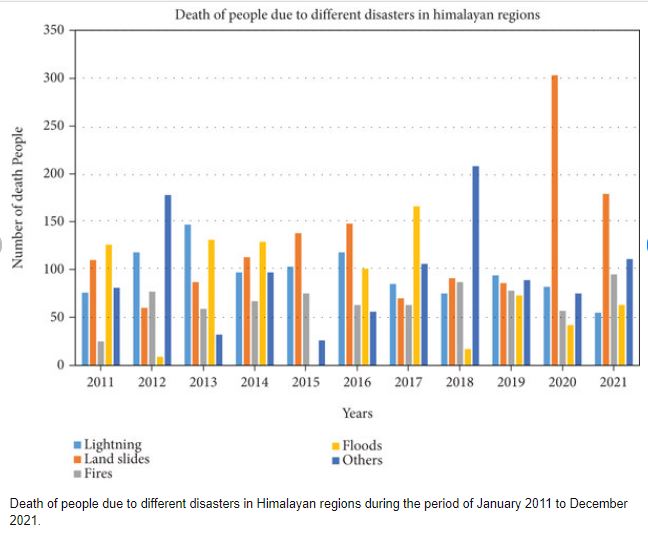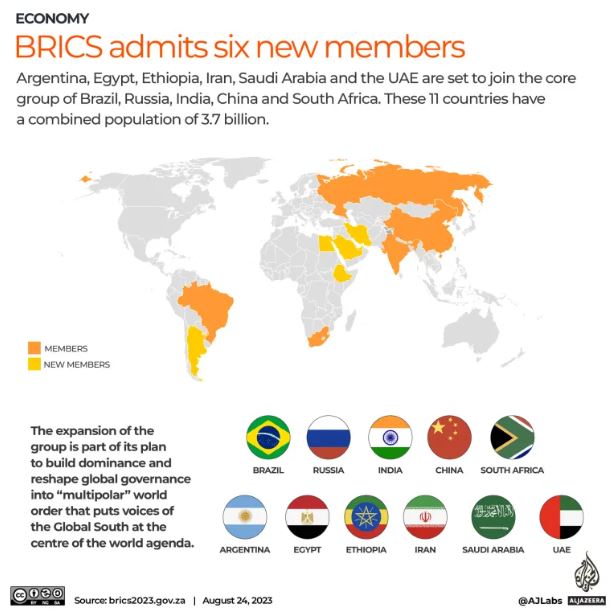CONTENTS:
- Time to Decide
- The Implications of the Expansion of BRICS
Time to Decide
Context:
Building infrastructure in mountainous areas cannot follow the same approach as in flat plains. The devastating floods in northern India in August have raised serious concerns among top officials. In the previous month, Chief Justice of India D.Y. Chandrachud, leading a bench, recommended the formation of an expert committee to conduct a thorough and extensive assessment of the Himalayan region’s capacity to support development. In response, the government has now suggested the establishment of a 13-member technical committee to address this issue.
Relevance:
GS3-Environment, Disaster Management
Mains Question:
How effective are the recent government initiatives in protecting the Himalayan ecosystem? What more can be done to preserve its environment? (10 marks, 150 words).
Carrying Capacity:
The term “carrying capacity” originates from the field of population biology and typically denotes the number of individuals of a species that can live and thrive in a specific ecosystem without causing harm. In most cases, when a population surpasses this capacity, it results in a natural decline in numbers, as observed in instances such as overgrazing in grasslands or the proliferation of invasive species, which disrupt the existing ecological balance.
Carrying Capacity in the Himalayas:
When considering these concepts in the context of hill stations and Himalayan states, the difficulty lies in finding a delicate equilibrium between a growing population, infrastructure requirements, and the fragile terrain. This undertaking is expected to be quite challenging. Based on recent history, it’s improbable that an impartial scientific viewpoint will be acceptable to all stakeholders in the Himalayan states.

Initiatives taken to study the Himalayan ecosystem:
| Initiative(year) | Outcome |
| 2013 | In the aftermath of the devastating floods in Uttarakhand in 2013, the Supreme Court appointed a panel of experts to investigate the impact of hydropower projects within the state. While the committee’s findings did lead to a reduction in proposed hydroelectric projects, they failed to impose restrictions on road expansion initiatives and the reshaping of mountainsides in ways that were considered unsuitable for the region’s topography. |
| 2020 | As early as 2020, the central government had distributed guidelines to all 13 Himalayan states for assessing the carrying capacity of their hill stations, cities, and ecologically sensitive areas. In May, the Ministry of Environment issued a reminder to all states, urging them to conduct such assessments and submit the results “at the earliest opportunity.” |
Analysis of these initiatives:
The land subsidence crisis experienced in Joshimath, Uttarakhand, in January triggered a discussion about the clash between infrastructure development and ecological concerns. However, within a few months, Himachal Pradesh faced an unexpected deluge that washed away roads and highways constructed on stripped-down mountains. Additional committees and reports won’t alter the fact that building infrastructure in hilly areas cannot follow the same approach as in flat terrain.
Conclusion:
States must either accept the higher costs associated with building in a more sustainable manner that minimizes risks to residents or designate certain regions as off-limits. The latter option has, for decades, been exploited for political gain. As unequivocal scientific evidence emphasizes, the choice to defer addressing these issues is no longer viable.
The Implications of the Expansion of BRICS
Context:
During the 15th BRICS summit in Johannesburg on August 24, it was revealed that the original five-member BRICS group consisting of Brazil, Russia, India, China, and South Africa had extended invitations to six new nations. These new invitees include Iran, Saudi Arabia, and the United Arab Emirates (UAE) from West Asia, as well as Egypt and Ethiopia from Africa, along with Argentina from Latin America. It was reported that a total of 40 countries have expressed their interest in becoming BRICS members, with 22 of them having formally applied for membership.

Relevance:
GS2-Bilateral, regional and global groupings and agreements involving India and/or affecting India’s interests
Mains Question:
BRICS Johannesburg summit is seen as as a “turning point in modern history”. Discuss with relevance to its recent expansion.(15 marks, 250 words).
About BRICS:
- BRICS has given rise to two significant institutions: the New Development Bank (NDB), designed to offer developmental assistance, and the Contingent Reserve Arrangement, which aids nations grappling with short-term balance-of-payments challenges.
- The NDB has already funded 96 projects with a total value of $33 billion.
- BRICS member countries have shared a common dissatisfaction with the international institutions, primarily dominated by Western powers, that emerged after World War II. These include the World Bank, the International Monetary Fund (IMF), the United Nations (UN), particularly its Security Council, and more recently, the World Trade Organization (WTO).
- BRICS challenges this Western-dominated global order by promoting economic and political collaboration among its members, establishing institutions beyond Western influence, and advocating vigorously for comprehensive reforms to accommodate the presence and interests of emerging economies.
Significance of addition of the new members in BRICS grouping:
| Economic: | With the proposed expansion, BRICS will encompass 46% of the world’s population, and its share of the global GDP, measured in PPP terms, will rise from 31.5% to 37%, surpassing the GDP share of the G7, which stands at 30.7%. The core five member nations currently represent 23% of global exports and 19% of global imports. With the inclusion of new members, these figures will increase by 3.7% and 3%, respectively. |
| Energy: | Out of the approximately 90 million barrels per day (mbd) of global oil production in 2022, the original five BRICS members accounted for 20% of the global output. This share will rise significantly to 42% with the inclusion of the new members. |
| Geo-strategic value: | The new BRICS members will bring substantial geostrategic significance to the alliance. West Asian members already have close ties with existing BRICS nations, with 35% of Saudi oil production going to China and India, Russia looking to Brazil as a market, and Iran significantly increasing its oil production, primarily directed towards China. Egypt and Ethiopia hold strategic importance in the Horn of Africa and the Red Sea, while Argentina is the second-largest economy in Latin America. |
| Declaration-Oriented Outcome: | Rather than focusing on the issues raised during BRICS summits and meetings, Western commentators have criticized the group as lacking a shared vision and being merely a “talkshop” with no significant achievements. However, these criticisms lack substance. Over the course of 15 years, BRICS leaders have consistently produced a consensual “Declaration” during each summit, addressing a wide range of issues. The declarations have expanded in content, emphasizing specific deliverables and broadening their areas of interest. |
| Emphasis on the developing world | In the Johannesburg Declaration, the majority of the document emphasizes intra-BRICS cooperation and outreach to other developing nations. Members have agreed to encourage the use of local currencies in internal trade and financial transactions with other trading partners. Iran’s inclusion in BRICS is seen as promising, not only for its role in the energy sector but also for the potential for enhanced regional economic cooperation and the revitalization of north-south connectivity projects involving the Chabahar port, in which India is involved. |
Conclusion:
The Johannesburg Declaration makes it clear that the members’ “strategic partnership” is aimed at achieving a “more equitable and inclusive international order.” The recent expansion of BRICS’s membership has resulted in a coalition that shares common global perceptions and interests, collectively wielding substantial economic influence within the enlarged group. Despite ongoing discussions among Western writers about an emerging global binary divide and a “new cold war,” India and other BRICS members firmly reject this limited perspective. Instead, they emphasize their strategic autonomy in a multipolar world order, insisting that their voices should be heard and their interests respected. Therefore, it’s not surprising that a recent media report characterized the Johannesburg summit as a “turning point in modern history”.





